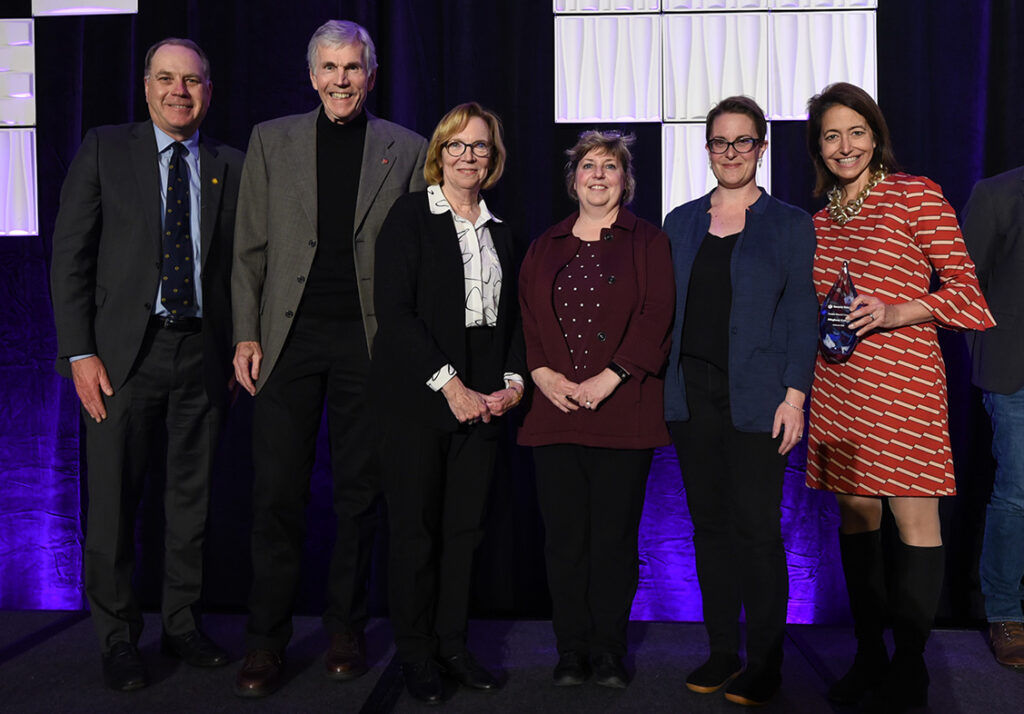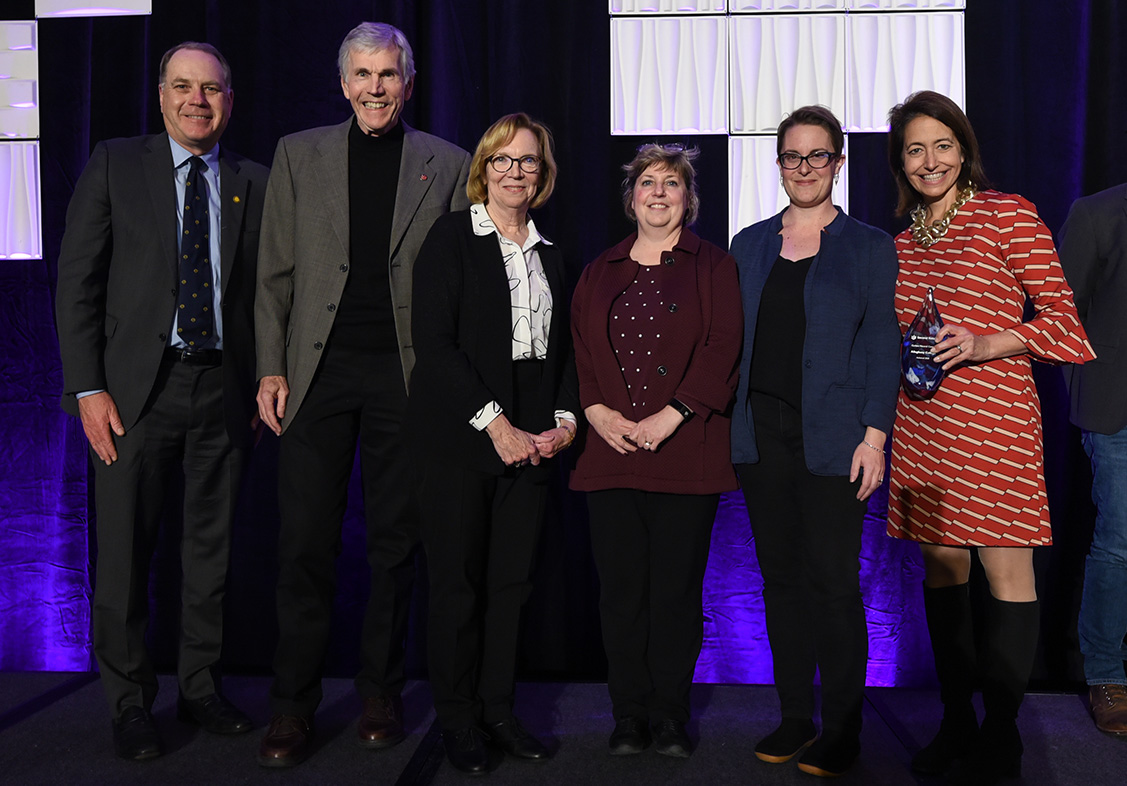
Allegheny College recently became the first college or university in Pennsylvania — and the eighth in the United States — to achieve carbon neutrality, according to Second Nature, a national organization committed to accelerating climate action in, and through, higher education.
[one-third align=”right”]
[box style=”blue”]
Watch Videos from the 2020 Second Nature Higher Education Climate Summit
- Plenary Panel: Maintaining Climate Momentum Through Presidential Transitions
- Allegheny College Recognized for Achieving Carbon Neutrality in 2020
[/box]
[/one-third]
A carbon-neutral institution first reduces its operational carbon footprint and then balances remaining emissions by investing in projects that will remove an equal amount of carbon from the atmosphere.
Carbon neutrality efforts demonstrate urgent climate action to reduce the concentration of climate-changing gases in the atmosphere dramatically, said Allegheny Director of Sustainability Kelly Boulton.
“Achieving carbon neutrality reflects more than a decade of effort to enhance efficiency in our operations, engage students in our research and action, and build collaborations with partners,” she said. “Carbon neutrality is not the end goal but rather another moment of progress in our continued efforts to be a sustainable and resilient campus and community member.”

Allegheny College was recognized for its efforts to achieve climate neutrality at the Second Nature Higher Education Climate Leadership Summit in February. Pictured, from left: President Emeritus James H. Mullen, Jr., President Emeritus Richard J. Cook, Trustee Christine Scott Nelson, Chief Financial Officer Linda Wetsell, Director of Sustainability Kelly Boulton and President Hilary L. Link.
Allegheny has a longstanding commitment to promoting sustainability practices and solutions. In 1972, the college established one of the first environmental science departments in the country. Allegheny’s Board of Trustees adopted environmental guiding principles in 2002, and the college became a charter signatory of the American College & University Presidents’ Climate Commitment in 2007.
“I am very grateful to the Allegheny community for the dedication, insights and hard work that have enabled the college to achieve climate neutrality,” said Allegheny President Hilary L. Link. “This was truly a collective effort that involved collaboration by the Board of Trustees, faculty, students, staff and external partners. I also want to recognize my predecessors, Presidents Emeriti Richard Cook and Jim Mullen, for their leadership in sustaining the momentum toward reaching this ambitious goal.”
Allegheny set a goal of achieving carbon neutrality by 2020 as part of a climate action plan adopted by the college’s Board of Trustees in 2010. Three key efforts have contributed to the college’s carbon neutrality:
• Reducing emissions through efficiency retrofits, system and behavior changes, and sustainable construction and renovation. The college has increased its energy efficiency by 19.2 percent during the last decade, even as the square footage of campus buildings expanded. Reducing energy consumption has led to significant cost savings for Allegheny.
• Decarbonizing energy sources by shifting from fossil fuel to alternative energy sources. Allegheny has installed geothermal heating and cooling systems in four buildings. In addition, photovoltaic arrays on campus generate 8,500 kilowatt-hours annually, and all electricity purchased by the college comes from wind-generated sources.
• Offsetting remaining emissions by investing in projects that prevent or remove an equivalent amount of carbon from the atmosphere. Through increased efficiency, the college not only has realized budget savings each year but also has been able to purchase offsets from its existing energy budget without allocating additional funds.
Boulton said that the college has intentionally invested in offset projects that relate to research by Allegheny faculty and students. For example, Allegheny chose a methane-capture project that generates electricity at a Pennsylvania dairy farm. It parallels teaching and research that Environmental Science and Sustainability Professor Eric Pallant completed with students to generate and capture biogas from agricultural waste. In addition, Allegheny selected a grassland and soil carbon conservation project in Colorado. That effort complements work by students and faculty in collaboration with a local company that grows switchgrass, a native prairie grass. The college’s offset portfolio also includes a water-filtration project in Haiti and an industrial emission-abatement project in Mississippi, both of which have numerous social, financial and environmental co-benefits.
Even as Allegheny celebrates achieving carbon neutrality, the college continues to think about the significant efforts that are next, Boulton said.
“We need to continue to decarbonize our campus through efficiency and scaling up our use of technologies such as geothermal and on-campus renewables,” she said. “We will explore opportunities to invest in renewable energy generated more locally. We will focus on expanding our understanding and collaborations with Meadville partners to develop and celebrate a more environmentally, economically and socially resilient community.”
For more information about Allegheny College’s commitment to sustainability, visit allegheny.edu/sustainability.


